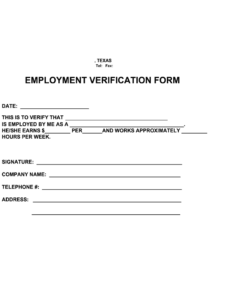Establishing a clear and comprehensive policy for company equipment use and return is vital to safeguard both the organization’s assets and the employee’s responsibilities. It lays down the guidelines for utilizing company-owned devices, ensuring their proper upkeep and secure return at the end of employment or project completion. This template provides a detailed outline for crafting a company equipment use and return policy.
A well-defined policy outlines the protocols for utilizing company-issued equipment such as laptops, smartphones, tablets, and other electronic gadgets. It provides a framework for the appropriate use of this equipment, ensuring that it is utilized solely for business purposes and safeguarding sensitive company data. Additionally, the policy establishes procedures for reporting lost or damaged equipment, ensuring timely replacements and minimizing financial implications for the organization.
Policy Implementation and Communication
To ensure effective implementation and compliance, it is crucial to communicate the policy widely to all employees. This can be achieved by incorporating it into the employee onboarding process, ensuring that new hires are well-informed about their responsibilities from the outset. It should also be regularly reviewed and updated to reflect any changes in equipment types, usage patterns, or company policies.
The policy should clearly outline consequences for non-compliance, such as disciplinary action or financial liability for any loss or damage to equipment. Regular audits and spot checks can be conducted to ensure adherence to the policy and identify any areas for improvement.
Equipment Maintenance and Security
The policy should emphasize the importance of proper equipment maintenance and security. It should outline the employee’s responsibility for keeping the equipment clean and free from damage, as well as the requirement to report any malfunction or repair needs promptly. Regular software updates and security patches should be applied to protect against vulnerabilities.
Employees should be instructed to take appropriate security measures such as password protection, encryption of sensitive data, and adhering to safe browsing practices to prevent unauthorized access to company data. In case of loss or theft, employees should immediately notify the IT department or HR to initiate the necessary recovery procedures and minimize security risks.
Conclusion
A comprehensive company equipment use and return policy template serves as a vital tool for organizations seeking to efficiently manage their technological assets. This template provides a solid foundation for establishing clear guidelines, ensuring responsible equipment usage, and facilitating a smooth return process upon termination of employment or project completion.
By implementing and adhering to this policy, organizations can safeguard their equipment investments, protect sensitive data, promote employee accountability, and maintain a secure and productive work environment. Regular reviews and updates to the policy ensure that it remains relevant and effective, facilitating the seamless operation of daily business activities.
FAQ
What is the purpose of a company equipment use and return policy template?
A company equipment use and return policy template provides a structured framework for organizations to establish guidelines for the appropriate use and handling of company-owned equipment by employees. It ensures responsible utilization of these assets, facilitates secure data protection, and enables a streamlined return process upon termination of employment or completion of projects.
What key elements should be included in a company equipment use and return policy template?
A comprehensive company equipment use and return policy template typically includes sections covering the authorized use of equipment, employee responsibilities for maintenance and security, procedures for reporting lost or damaged equipment, and consequences for non-compliance. It also outlines the process for returning equipment upon termination of employment or project completion.
How can organizations ensure compliance with the equipment use and return policy?
To ensure compliance with the policy, organizations should communicate it effectively to all employees during the onboarding process and provide regular training and updates. They should also conduct periodic audits and spot checks to verify adherence and address any areas for improvement. Additionally, implementing consequences for non-compliance can serve as a deterrent against policy violations.

